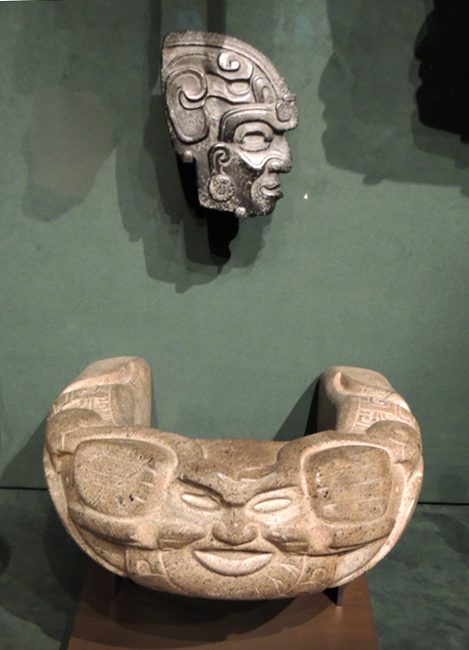Source: Boston Museum of Fine Arts.
Notes: Here you see a ritual mask for players in the ball game and a ceremonial ball game yoke. These artifacts are made out of stone, date between 800 CE and 1550 CE, and they come from Puerto Rico, Haiti, or the Dominican Republic, which means they were imported from Mesoamerica or Mexico. According to the plaque describing the yoke, "the graceful curves and abstract zemi face distinguish this yoke as an object of prestige and power." A zemi was a deity in the Taíno religion, which was based on ancestor worship, of the peoples of the Caribbean and northern South America. For their culture, the creator god was Yúcahu Maórocoti: he controlled the cassava plant, which was was their central food. The zemis were more minor deities, one of whose tears are drops of rain. Furthermore, bones and skulls of the deceased were used in artifacts of sculptures and funerary urns. For artifacts depicting Mayan ballplayers, see: => Mayan Art
page 5 and
page 6.


